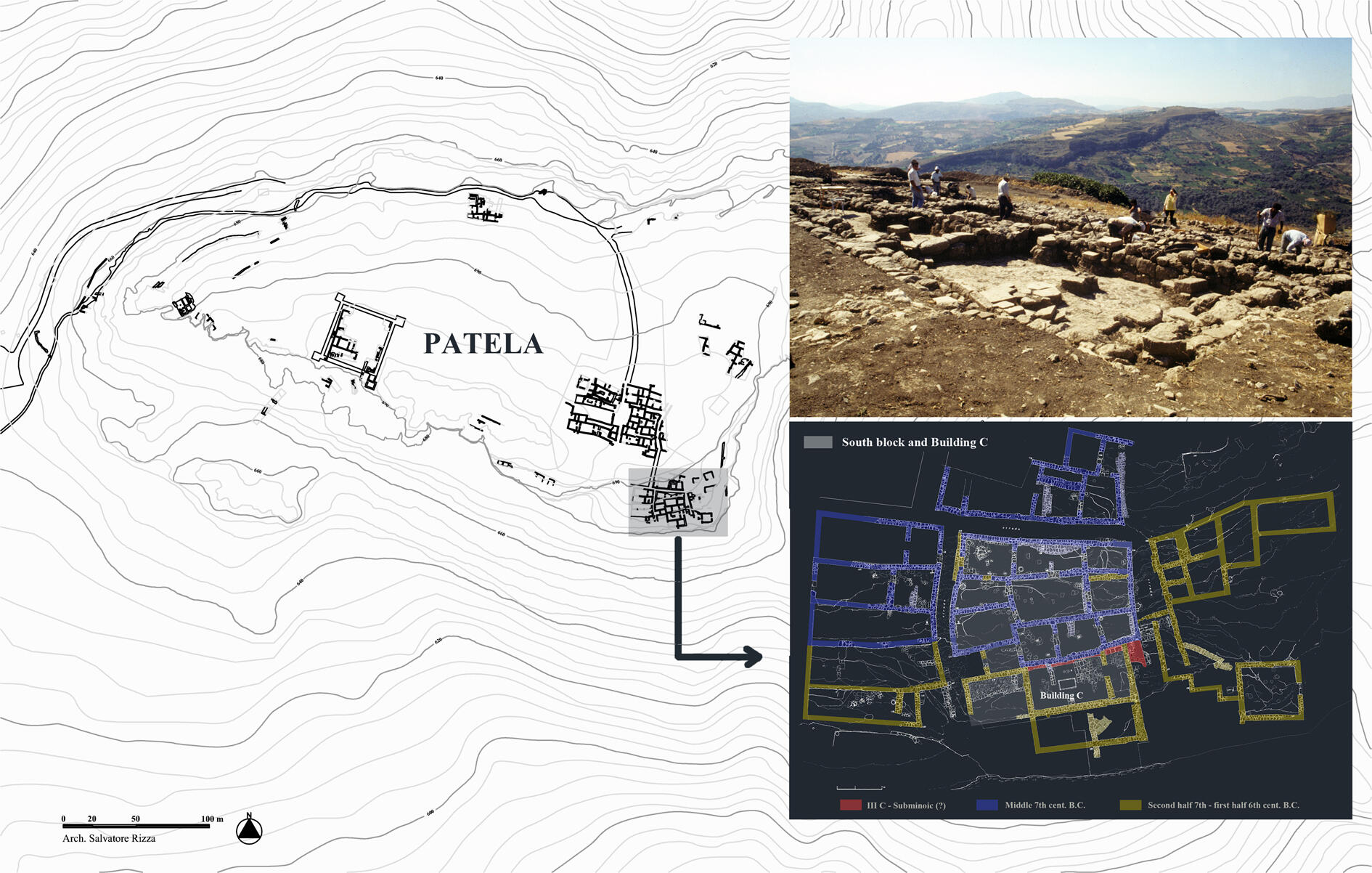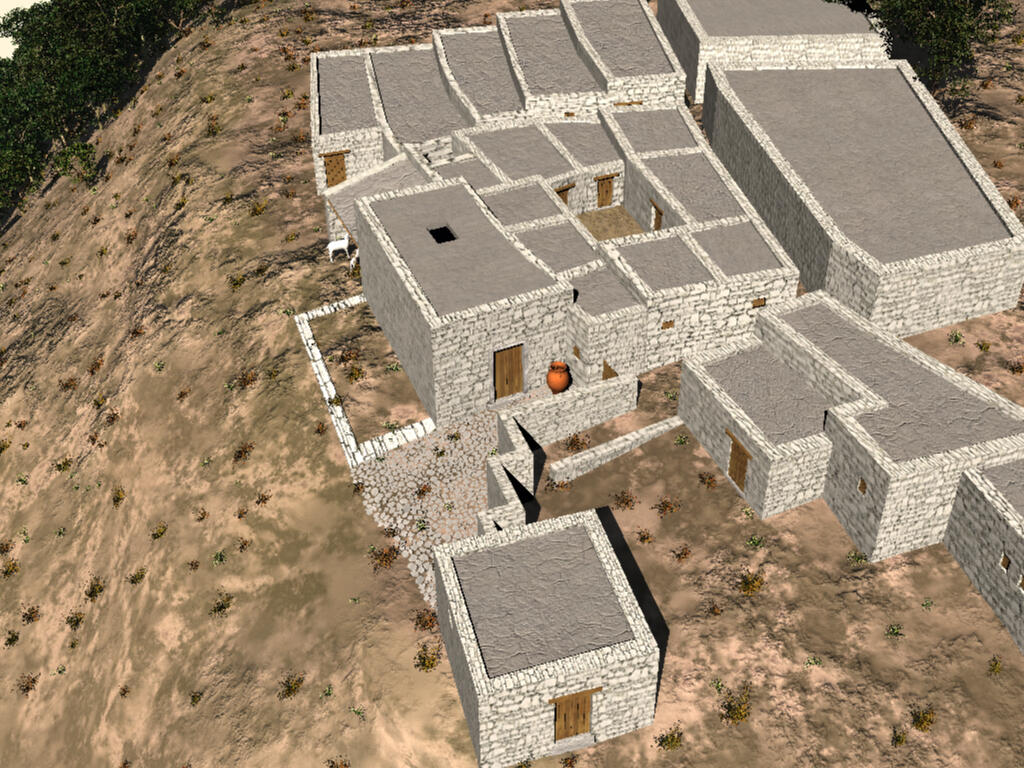This grant will support the final publication of The Archaic complex on the south slope. Private and communal spaces on the Patela of Priniàs, concerning the excavations carried out on the south slope of the Patela of Priniàs by the Italian Archaeological Mission in the years 1989, 1991, 1993, 1994, with special reference to a large Archaic block built over older remains.
Situated in Central Crete at the foot of the Psiloritis mountains, the settlement of Priniàs lies on a triangular shaped plateau called Patela at an altitude of 690 meters above sea level. Its strategic position, at the confluence of two valleys linking the North and the South of the island of Crete, clearly explains the reasons of the development of such site during the Iron Age and the Archaic Period (from the end of the Bronze Age to the first decades of the 6th century B.C.).
The large building complex lying on the south slope of the settlement on the Patela plateau was built in the second half of the 7th century B.C. and has a great interest in the research on the development of Archaic polis, both from urban and socio-political point of view, since it includes private and “communal” spaces. The block, highly relevant for the uniqueness of its structure, had an original core of nine rooms arranged around a central courtyard. The study of the material evidence and floor assemblages allowed to identify the functions of some rooms and distinguish a service area from a residential one. An edifice with central eschara and a large courtyard in front of it was added to the private core of the block, shortly after its building. Floor assemblages in the courtyard and in the building show the willing to display status and wealth of a social corporate group, and stresses the “communal character” of this building, as a venue for communal practices.
Below the archaic levels some traces of an earlier occupation, dating back to the earliest stages of life of the settlement (LM IIIC/SM/PG), have been brought to light during the old excavations, namenly a tripartite block carved in the rock, a small column base rising from the outcropping rock and the remains of a bench (in red in the fig. 1).The earliest architectural remains were respected by those who built the seventh century structures. The analysis of the earliest archaeological material, especially pottery and coroplastic finds, thus far almost completely unpublished, revealed new interesting data on the first history of this area.
Preliminary reports of the progress of the research project have been presented in:
- A. Pautasso – S. Rizza, À l’interieur de l’habitat, à l’interieur de l’oikos. Espaces et fonctions dans l’îlot du versant meridional de Priniàs, in Géosciences, archéologie et histoire en Crète de l’Âge du Bronze récent à l’époque archaïque, Actes du Colloque International Pluridisciplinaire, Strasbourg 16th -18th October 2013, a cura di D. Lefèvre-Novaro, L. Martzoff, M. Ghilardi, Padova 2015, 275-292;
- S. Rizza – A. Pautasso, New research on the so-called “Temple C” and the related building on the south slope of the Patela of Priniàs, in Proceedings of the 3rd Meeting for the Archaeological Work in Crete, Rethymno 5-8/12/2013, 2016, 359-365.
The grant is supposed to cover a part of the costs of the preparation for the final publication. It will be published in the series Monographs of the Italian Archaeological School at Athens, as the first volume of the Priniàs series (Priniàs I). The publication project is directed by Dr. Antonella Pautasso.



